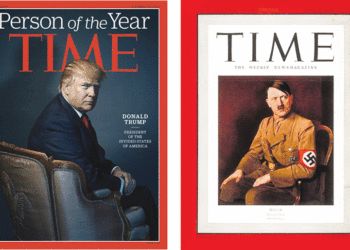Ira Sheskin, Ph.D., conducted the 2004 Twin Cities Jewish Population Study, the federation-commissioned, in-depth study of Jewish demographics in our urban communities. As it happened, Sheskin, the director of the Jewish Demography Project of the Sue and Leonard Miller Center for Contemporary Judaic Studies at the University of Miami, was the featured presenter at the first workshop of the 2011 American Jewish Press Association conference in Dallas, Texas.
I traveled to Dallas (specifically, to the Westin Galleria and the adjoining Galleria shopping mall — that is all that I saw of the city, apart from the route from the hotel to the airport) for the annual summer conference that brings together editors and publishers of Anglo-Jewish publications from around North America. This was my sixth straight AJPA conference. It was a diminished gathering, in terms of participants and sponsors, this year; perhaps the turnout reflected the general downturn in the newspaper industry amid the ongoing Great Recession.
Sheskin said that there are between 6 million and 6.4 million Jews in the United States; it’s a rough estimate. “We don’t know and we’ll never know” the precise number, he commented.
The Jewish demography maven explained the methodology used to get his study results. One technique is “random digit dialing,” in which households are called and whoever answers is asked if any Jews are living there. One randomly called respondent said, “We have 50 people here, all married to the same Jew.” A survey worker had called a convent.
I had a chance to talk to Sheskin about his finding that 49 percent of households in the Twin Cities “always, usually or sometimes” read the American Jewish World. The total of 9,367 households reading our newspaper seems to be on the high side, as the AJW circulation, in 2004, was around 5,000. Sheskin admitted that his figure might be off. Apparently, the survey business is part art and part science.
(We published a JTA report in the last edition about a study in Portland finding that the Jewish population had doubled in size; Sheskin explained that the new population survey there was grossly flawed.)
Well, maybe Sheskin is right, and our readers are sharing their newspapers with their friends and relatives. We can work with the figure of 27 percent of the community (5,168 households) “always or usually” reading AJW.
Another highlight of the conference was the screening of the documentary Standing Silent, which shines a light on the sexual molestation of children, both male and female, by rabbis in Baltimore’s Orthodox community. The film focuses on the investigative reporting of Phil Jacobs, of the Baltimore Jewish Times newspaper, an observant Jew and unlikely hero who finds himself pilloried in the religious precincts for his disturbing revelatory stories about respected rabbis who also were sexual predators. Scott Rosenfelt, an accomplished Hollywood producer (Home Alone, Teen Wolf, Mystic Pizza), produced and directed Standing Silent, his first documentary film. The powerful documentary is being screened in a number of upcoming Jewish film festivals — it should be shown locally, too.
I attended several workshops dealing with the business side of Jewish newspapering. I had a number of questions in my mind, including our upcoming centennial year. With our Rosh Hashana special edition, Sept. 16, 2011, we will begin the 100th year of publishing this newspaper — Vol. 100, No. 1. Rabbi Samuel Deinard, a visionary rabbi from Lithuania, founded the American Jewish World (along with Leo Frisch, the paper’s publisher for more than 60 years), which he saw as a unifying force in the Jewish community.
The Jewish World’s centennial year will be a time to celebrate our history and think about how the Twin Cities Jewish community can continue to grow and prosper. We would like to hear your suggestions for marking this significant milestone. The organized Jewish community relies on the AJW to get out the news of their upcoming events; we invite individuals, congregations, agencies and organizations to support the cause of this independent Jewish journal.
As we proclaim under the flag at the top of page one, this paper represents the “voices of Minnesota’s Jewish community.” From Rochester to Duluth, from St. Paul to Morris, we communicate Jewish concerns and announce simchas. Our small staff works hard to produce a newspaper that is entertaining and edifying. Occasionally we provoke controversy; but that is what any newspaper of value does from time to time.
Again, everyone is invited to the party, which kicks off ahead of the High Holidays. With your help, we look forward to a centennial year that celebrates our history and helps plot a course for a strengthened Jewish community in Minnesota.
— Mordecai Specktor / editor@ajwnews.com
(American Jewish World, 7.8.11)



















For three years, the Minneapolis Jewish Federation and the United Jewish Fund and Council of St. Paul published Twin Cities Jewish Life and mailed it, free of charge, to 13,000 Twin Cities Jewish households. The newspaper, funded by the Harry Kay Charitable Foundation, informed, educated, entertained and empowered readers about issues of interest to the Twin Cities Jewish community.
Our survey was done during the time when Twin Cities Jewish Life was publishing and sending to 13,000 TC households. My guess is that many people who said they were always/usually/sometimes reading AJW were actually reading TCJF. This may explain why the survey overstimates readership.
Ira Sheskin